Kevin Noble
Diamonds and Dust
by Michele Corriel
Photographer Kevin Noble looks for the sublime in everything he does. In recent years, he’s been enthralled with Yellowstone National Park, investigating the natural world in the unique situations only the park can offer.
Last winter, while setting his camera down to get just the right perspective on an approaching bison, he noticed ice crystals in the air.
“I wanted to capture the idea of those frozen ice crystals as part of the composition,” he says. He recalled how extraordinary it was to see this phenomenon. However hard he tried to get it documented on film, it just wasn’t possible.
When Noble was in Yellowstone National Park it was minus 40 degrees and very sunny. A condition that would be impossible to replicate on demand. The moment, intense and spectacular, stayed with him. To photograph it, in some form, Noble knew he had to think outside the box.
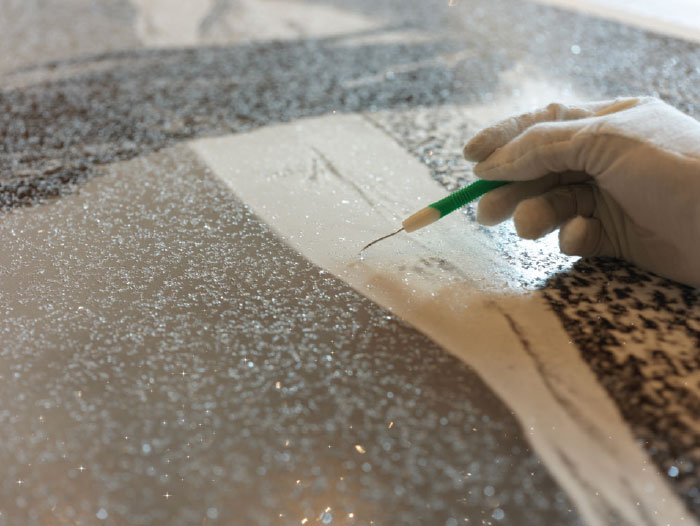
“I wanted to capture the idea of those frozen ice crystals as part of the composition.”
–Kevin Noble, Photographer
The formal meteorological term for these crystals is “ice prisms” and they are an unusual form of precipitation in that they can float from a clear blue sky as well as cloudy. They usually only form in extremely cold and dry conditions, where the water molecules freeze immediately.
Not one to walk away from a challenge, Noble kept thinking about those fantastic ice crystals and what a fabulous photograph it could become. But how to combine his stark black and white images with this rare weather experience presented a conundrum. “And then I recalled how Andy Warhol created a similar type of image using crystal glass and diamond pebbles,” he says.
The Diamond Dust Shoes series is the first body of work in which Warhol used the material in his screen-printing process. After some experimentation with fine diamond dust powder, he sourced larger crystals of crushed glass. For Warhol, the material carried connotations of glamour, luxury, and expense. For Noble, the material conceptualizes nature at the pinnacle of winter.
Eventually, Noble discovered a printer who could work with this idea. The process involves paint, photo-printing, silk-screening, and a scattering of crushed glass and diamond particles.
“It’s very time-consuming,” Noble says. “I’m still experimenting, but I’m happy with the way these came out.”
Then I recalled how Andy Warhol created a similar type of image using crystal glass and diamond pebbles…It’s very time-consuming. I’m still experimenting, but I’m happy with the way these came out.”
–Kevin Noble, Photographer
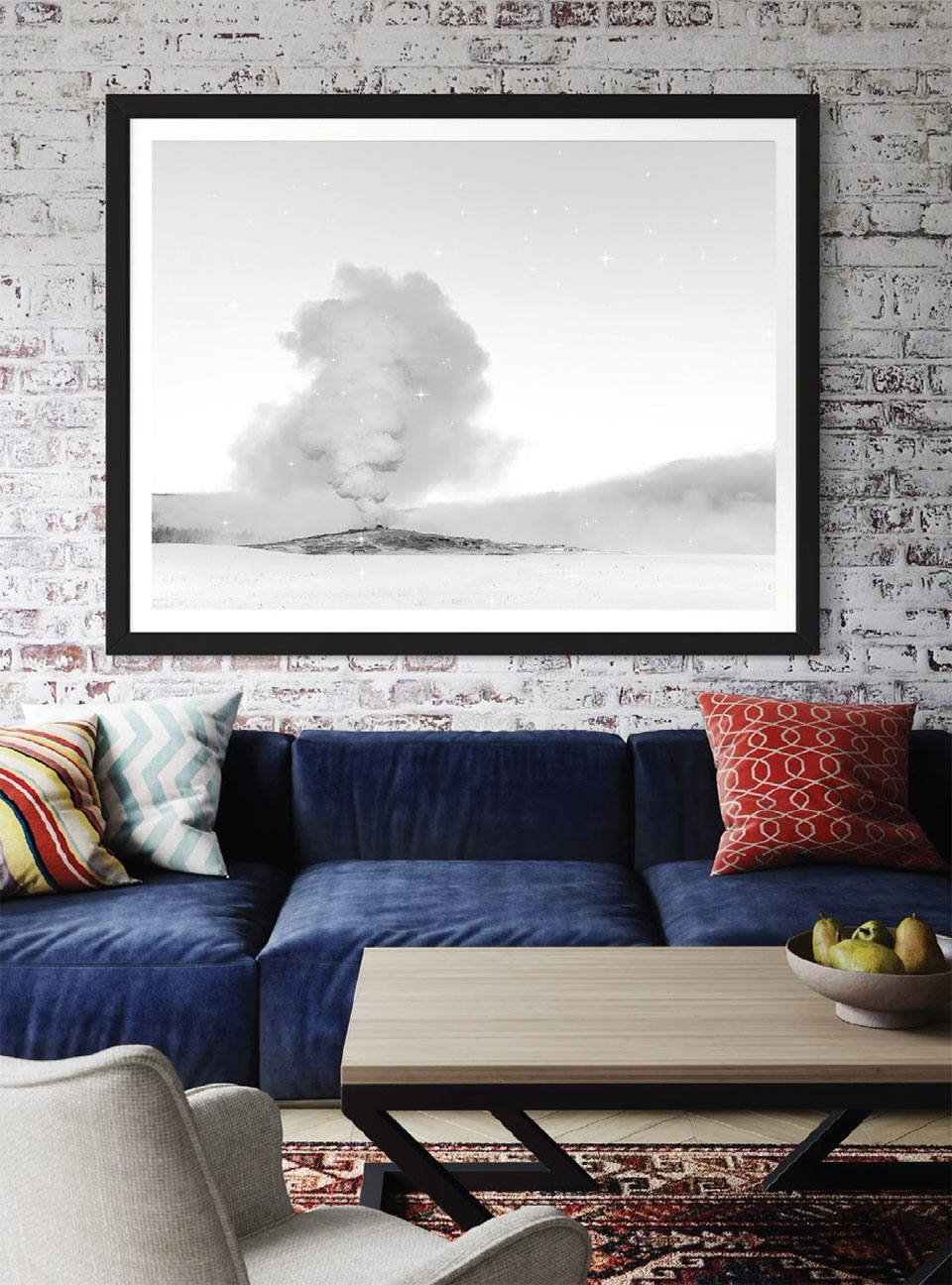
The Diamonds Are Forever series consists of several black and white photographs treated with his mixture and process. The end result is a subtle, surreal image. It is engaging; as the viewer moves around the room, the photograph changes. Whether it’s the glint of small crystals or bits of diamond dust, the photograph seems to merge experience with each slight change in perception.
“It was so cold my vehicle’s dashboard was lit up with all of the warning lights, my camera wasn’t working well, and my hands were numb. The bison began to march down the road. I knew what it was, those ice crystals, and tried to capture it with my camera in the moment.”
–Kevin Noble, Photographer
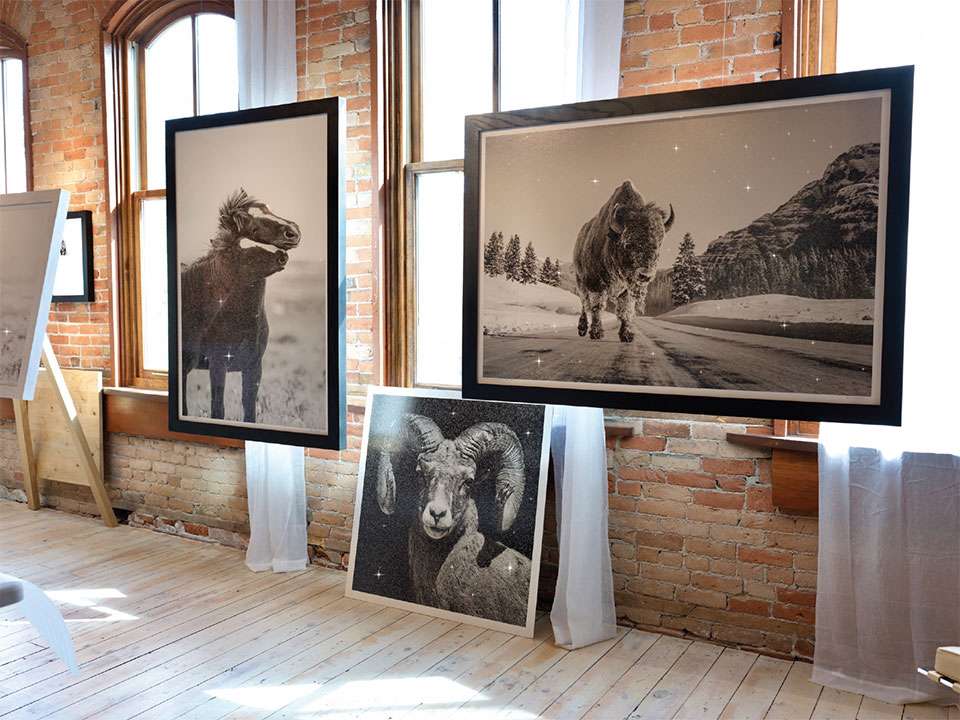
The day Noble took the photograph of the bison in the park feels like a remembered dream to him. “It was so cold my vehicle’s dashboard was lit up with all of the warning lights, my camera wasn’t working well, and my hands were numb,” he recalls.
There was no one else there and the temperature remained at 40 below zero.
“The bison began to march down the road,” he says. He placed his camera down on the asphalt and used a remote trigger to catch the shot. “I knew what it was, those ice crystals, and tried to capture it with my camera in the moment. Then I noodled with the image.”
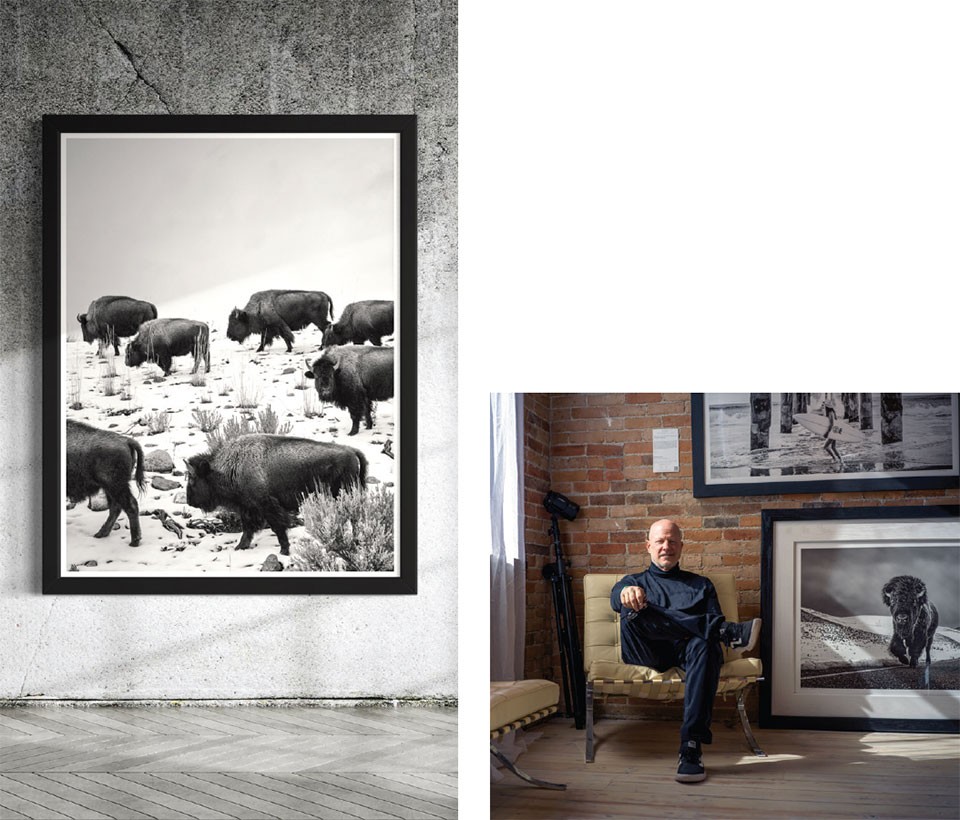
After attempting to hone in on the process that gave him the experience he had in the park on that day, Noble also did not want to overdo it.
“I didn’t want the diamond dust to overshadow the photograph,” he says, of the powerful image of a single bison, breath visible, coming toward the camera. The photograph, 40 Below, is enhanced by the diamond dust. Without the glitter, the photograph certainly stands on its own, but with it becomes something else entirely.
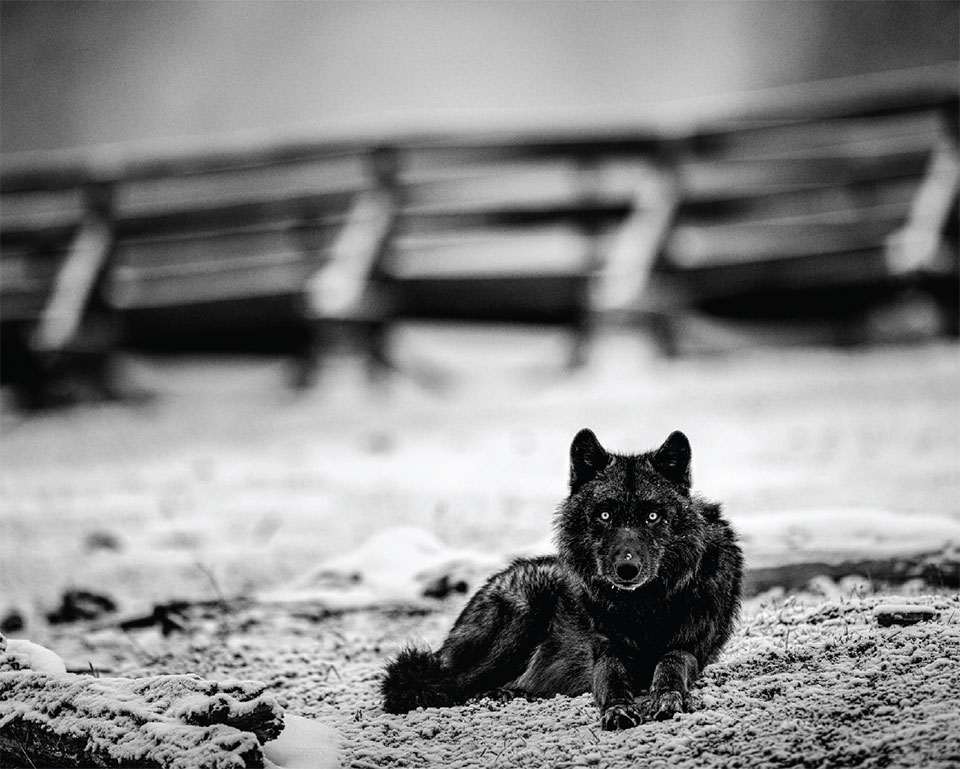
Back In Black | 61″ X 43″ | photography | Kevin Noble
The presence of Noble’s photographs in the Diamonds Are Forever series offers an unexpected opportunity for a dialogue with nature and to think about the world, the park, the winter. Most of us will never face a black wolf or share the middle of the road with a bison in minus 40-degree cold. But Noble gives us the ability to imagine it.
In his photograph, Back in Black, Noble catches a lone black wolf at rest, paws in front, rear legs passive. The eyes, questioning, taking in its environment, ready at a second’s notice to run. The photograph without the diamond treatment is compelling, but once the shimmer of the dust is applied it feels otherworldly.
The presence of Noble’s photographs in the Diamonds Are Forever series offers an unexpected opportunity for a dialogue with nature and to think about the world, the park, the winter. Most of us will never face a black wolf or share the middle of the road with a bison in minus 40-degree cold. But Noble gives us the ability to imagine it.
